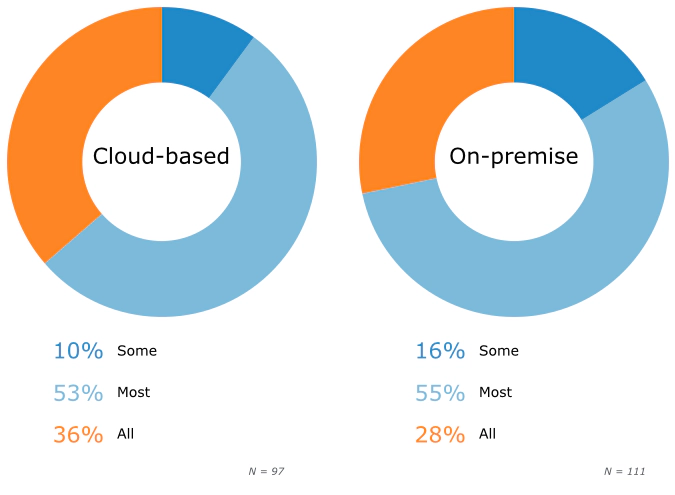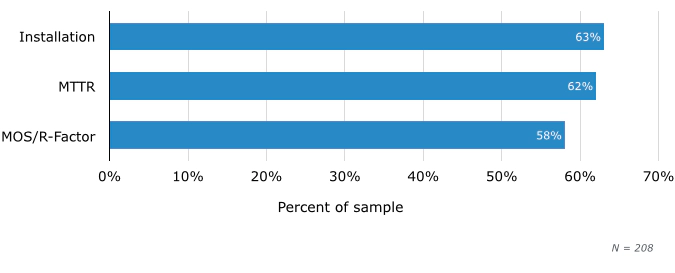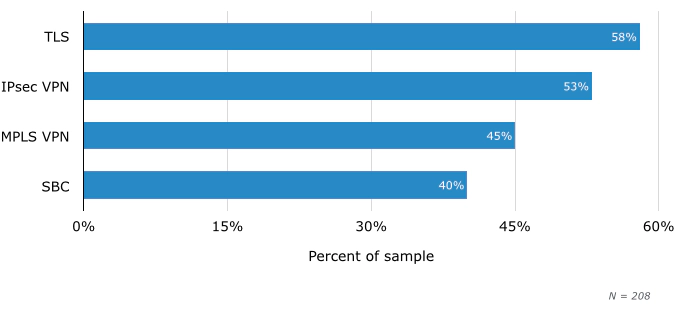SIP Providers: What to look out for when choosing your provider
Macedonia is already All IP, Verizon in the USA, ceased to offer ISDN basic services in May 2013 and Deutsche Telekom are planning to do the same for the German market by 2018 and in the UK 300,000 ISDN channels were lost between 2007 and 2012 and will be shut down in 2025.
It paints an ugly picture for the ISDN and has got some businesses asking what’s next. Simply put, the answer lies with SIP (Session Initiated Protocol). SIP trunking provides businesses with a more flexible, cost-effective alternative to the ISDN and is rapidly taking up market share.
That all begs the question; what should companies look out for when choosing their SIP providers, and how does SIP trunking affect their current phone system? In our first post on SIP Providers we analysed the survey results from part one of VoIP and Telecoms review website Software Advice’s investigation into the core considerations for choosing your SIP providers and once again our friends over at Software Advice have compiled yet more research which sheds even more light on what to look for and what to expect.
In part two of the report, market research associate Daniel Harris goes into more detail concerning SIP Providers, their compatibility, uptime comparisons as well as SLAs (Service Level Agreements) and security concerns as according to IT decision makers who have already made the switch to SIP. So what did he uncover?
On-premise PBXs are more reliable
When it comes to SIP trunking, it is perceived by the respondents that on-premise or on-site PBX (Private Branch Exchange) systems deliver greater reliability compared to cloud-based solutions. 35 % of the respondents reported that they either have never or have rarely experienced any form of service outage with their on-premise systems compared to only 21 per cent of those operating cloud solutions. While there are plenty of reasons why this could be, the main culprit is likely to be that with cloud solutions, users often access the system via public and other private networks which may not offer the best bandwith and stability. Whereas on-site solutions provide for a more direct connection to the PBX.
Therefore, if continuous service is essential to your business model, then an on-premise IP PBX may be a consideration. That said, cloud solutions have come a long way, Internet speeds and reliability have improved greatly and mobile Internet is now often faster than private connections at home. This means cloud solutions will continue to grow in popularity. Therefore, our recommendation for those who constant telephony services is mission-critical, such as a ContactCenter, would be to choose an on-premise or cloud solution based on availability. In the case of on-premise solutions, this can be achieved using the redundancy of virtualisation.
Alternatively, if the cloud is the platform of choice, check with the solution provider what their availability statistics are. However, with cloud solutions, where such redundancy measures are likely undertaken in the data centre where the solution is hosted, then availability stats and redundancy measures are of no use if your Internet connection is unstable or unreliable as should the connection between the customer and the centre be broken, then the only option at this point is mobile VoIP, which by today’s standards is actually not only a viable option but almost a must have.
SIP Providers, Compatibility & Configuration
One of the drawbacks of SIP Trunking stems from configuration complexity and compatibility issues. The survey uncovered that in terms of compatibility, cloud-based PBX solutions suffered from fewer problems and therefore supported a greater array of PBX features compared to on-premise solutions. 36 per cent of the decision makers surveyed who operate cloud solutions reported that all their PBX features were supported compared to only 28% of those operating on-premise based solutions. However, this discrepancy likely stems from the fact that of the respondents, a significant proportion (63 %) had already consolidated their telephony systems to one provider, which obviously should eliminate any potential for unsupported features.
 SIP Providers & Supported PBX features
SIP Providers & Supported PBX features
In terms of configuring SIP trunks, it is a sad fact that the provider settings are not standardised across the industry. The figures are almost comparable to one another with 27 % of the survey responding that they found SIP trunk configuration moderately difficult with an on-premise PBX, compared to 25 per cent of those cloud-based solutions. 45 % of both camps reported that that only experience minimal difficulty.
Daniel Harris uses the figures to highlight that cloud solutions are typically easier to configure compared to on-premise solutions, as one has to ensure that the SIP provider can support proprietary hardware. He has a point, but I see it slightly differently. In the report, he mentions that 63 % of the survey respondents have consolidated their PBX with their SIP providers and yet 25 % are still experiencing moderate difficulties, which either highlights the complexities of SIP trunking or those that haven’t consolidated are experiencing severe difficulties. All of which says to me that the compatibility between SIP providers and PBX solutions, regardless of whether cloud-based or on-premise is fairly similar. An alternative would be to search for a PBX vendor, whether cloud-based or on-premise based, who are actively working with SIP providers to build SIP Provider Databases and Template wizards to facilitate not only the configuration but also compatibility, as we have done with our latest pascom UCC solution.
SIP Providers & SLAs
Service Level Agreements (SLAs) are essential for minimising configuration and installation problems. The report suggests that in the main, SIP Providers are doing a pretty good job when it comes to offering SLAs that can be matched to your business requirements and then living up to the terms of their SLAs and goes on to mention that selecting a SIP provider according to their SLAs is an effective way of ensuring consistent uptime and call quality. But what sort of SLAs are on offer? In effect there are three SLAs, that SIP providers generally offer; Installation, Mean time to recovery (MTTR) and audio quality (either Mean Opinion Score, MOS, or R-Factor score).
Installation and MTTR refer to the specified time period in which a provider will either complete the installation (number porting etc) or the guaranteed time frame in which services will be restored following a failure. MOS and R-Factor are somewhat more complicated but refer to a scale of audio quality based on user experience but taking technical factors i.e. network performance into account, with R-Factor being the more sophisticated model.
 SIP Provider SLAs
SIP Provider SLAs
SIP Trunking Security
Once again, the question of security rears its ugly head. Sadly, we live in a world where nothing is completely secure, we can only implement countermeasures to secure systems as much as possible. We will cover the question of security in more detail in the future, but it is worth noting that SIP providers take the subject seriously, implementing various countermeasures as standard. The most common being TLS (transport layer security), VPNs (Virtual Private Networks (either IPsec or MPLS) and Session Border Controllers (SBCs), with TLS being the most popular (58%). All have slightly different roles, such as TLS being primarily deployed to help prevent denial-of-service attacks (DOS) and VPNs being deployed as a security measure for traffic that has to be routed over public networks (internet), due to geographic distance or network design.
 SIP Provider Security
SIP Provider Security
It is worth noting here, that there is some cross-over between the results, which means that the having deployed one countermeasure, most companies deploy secondary and tertiary countermeasures as well.
Summary
No matter whether you implement or operate an on-premise or cloud-based solution, SIP trunking is set to be the future of VoIP telephony. Therefore, choosing a SIP provider that matches your business needs in terms of compatibility, ease of configuration and SLAs is paramount. It is also worth considering your SIP provider with the future in mind, don’t just look at the here and now, as who knows in a years time, you may have that new international office and your SIP provider needs to be able to offer you a solution, i.e. number and if they can’t, then you will have to go through the whole process again.
If you are considering switching or upgrading your telephony services to an ALL IP SIP VoIP solution or would like more information regarding pascom, then give the pascom team a call on +49 991 29691 0 to discuss your requirements and get started within minutes using our free hosted business VoIP phone system edition.